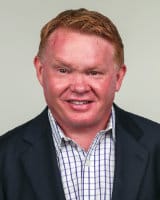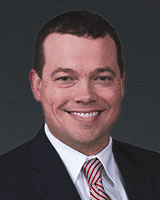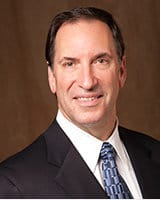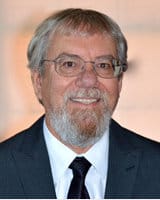
If you’re a dental student or new graduate, you’ re going to be faced with a multi-million dollar decision soon. Would a difference of over $12 million dollars in a thirty year career make a difference to you? If so, keep on reading.
I know you’re thinking, “What kind of stupid question is that? Of course I would rather have $12 million more instead of less when I retire.” But if you’re truly serious about having that extra $12 million, you’re going to need to make some serious decisions and actions to make that happen.
You’re probably thinking that you’ll have to swallow a gallon of snake oil to make this incredible difference in your net worth, but actually, it’s a very simple decision and action, one taken by hundreds of thousands of dentists before you.
Several years ago I was talking with a banker who did lending for practice acquisitions and I asked him why so many corporate companies were forming to buy up dental practices. He looked at me like I had two heads, and then explained that while this group of investors had vast sums of cash to invest, they were only earning about 1% interest in money markets. And then they discovered dentistry and saw how they could get a 20% or better rate of return on their investment by owning dental practices. I couldn’t believe what he was telling me, so I went home and got out the spreadsheets I created for my existing clients to see how that could possibly be.
Looking at those actual practices and their actual financials with a fresh eye, I began to view the practice metrics like a businessperson rather than a practice broker. I made cash flow adjustments to reflect the real dental income and the actual practice expenses and, as a new adjustment, included an expense for the owner’s labor of 35% of their personal production. Subtracting the actual practice expenses, including an allowance for the owner’s labor, resulted in the actual profit of the practice. If I did not subtract the expense of the owner’s salary, I would have come up with the resulting practice net income, but realize that the practice net is made up of two components, owner’s salary and practice profit.
The key to this whole epiphany was the bottom line profit. And this profit is what the corporate companies want out of dentistry. The real takeaway about profit that few dentists understand is that profit is a benefit of ownership, not of work. The owner of the practice, whether it be the corporate owners and shareholders or the dentist himself, gets the profit, and nobody had to work for it. Just be an owner. Then I fully understood why corporate America wants to own your profession.
Taking this actual profit and dividing it by the price of a practice tells us the rate of return on that practice investment. I found practice rate of returns on these actual practices of 20% to 30% and even more. The highest rate of return was for a pedodontics practice which showed a rate of return of 55%!
I went on to examine a practice I was marketing at the time to see what rate of return could be realized. The practice had revenues of $1,170,000, with hygienists producing $315,000 of the gross and the purchaser doing $855,000 in work. I know that sounds like a lot of work for one dentist to produce, but at five days per week for 45 weeks per year, it would only require $3,800 in daily collections - an amount that is easily achievable. As the purchaser gathered speed and skills, this amount could be achieved in a four day week with seven weeks vacation.
Ask any successful businessperson where you could invest money and get a 26% return on your investment and they will most likely tell you that you’re crazy. And then they will ask you where are you going to get any money to even invest. Yet, the purchaser of this practice borrowed the money for this investment and it was in place on day one.
They did not have to try to save up $750,000 to invest, which never would have happened. They just borrowed it.
In addition to the profit on their investment of $213,000, they also received something else with that investment – a job! And a great job at that, paying them 35% commission for a salary of $300,000 per year! Now for the math majors in the crowd, we can deduce that the purchaser made over a half million dollars in that first year alone! For the analytical type dentists, here’s how we compute the actual practice profit.
Gross Revenues
Subtract Operating expenses
Subtract compensation for owner’s work – 35%
Add Tax Savings from purchase
$1,170,000
$700,000
$300,000
$43,000
__________________________________________________________________________________
Practice Profit
$213,000
Now it’s time to address that hook that I put out there – a thirty year career and retiring with over $12 million dollars more as a result of buying a practice. Well first, consider that the owner of this practice will keep the $200,000 per year profit rather than watching it go to the corporate executives and company shareholders. If you were to invest that $200,000 profit each year at a very conservative rate of only 4% interest, and never increase that investment, even though the profit will grow annually, in thirty years that account would have more than $12 million in it. That still leaves you an increasing salary starting at $300,000 per year to live on. You have had a very lucrative career and rewarding lifestyle, and in addition you’ll be able to retire at age 56 with over $12 million in your account.
Now if you don’t like the sound of that, you could take a job with corporate dentistry that pays 25% commission and doing the same amount of work, but probably more due to the low paying managed care plans that you’ll be in, and your yearly income would be $214,000. Period. No profit because that belongs to your company’s shareholders. You’re making ~$100,000 less per year salary and receive no profit. Now consider that you spent eight years of your life and around $400,000 in education to be able to provide corporate shareholders with the $12 million that you could have retired with and $3 million less income over your career. Does that really make any sense?
Now you may love the idea of being an owner and receiving profit but are put off by the cost of buying a practice. If that might be the case, consider the $300,000 income generated by the hygienists of this practice and deduct the hygienists’ salaries of $130,000 and you have a profit from the hygienists of $170,000 per year. That is more than ample to cover the $120,000 per year in loan payments. So in reality, those very nice hygienists are paying for your practice one and a half times each month. What could be nicer than that? So if you’re worried about making those practice payments, let the hygienist do it for you. In many cases I see where the hygiene profit will pay for not only the practice but also the building as well.
And it gets even better! Uncle Sam desperately wants you to buy a practice, so much so that he will allow you to deduct the entire price of the practice as well as the interest on the loan to buy it. In this case instead of paying $250,000 in taxes on your income, Uncle Sam will let you apply that amount to the practice sale price! That’s a one-third savings on the price right there! And in ten years, the loan payments will end, and those $120,000 per year payments will now stay in your pocket. Oh, and when you’re ready to retire, collect another $1.5 million when you sell your practice.
Anyway you slice it, your option to own your own practice, be your own boss, actually work fewer hours and have more income to live on and retire on are the benefits of ownership. The owner of this practice would earn $9 million in salary over their 30 year career even with no raises compared to the $6 million earned by the employee dentist.
And the owner has a $12 million nest egg at the end, and we don’t see where the employee has anything.
So as you start your career, consider the rewards that are yours to claim or forfeit. Decide carefully when you make that multi-million dollar decision.

 Add me to your address book
Add me to your address book



